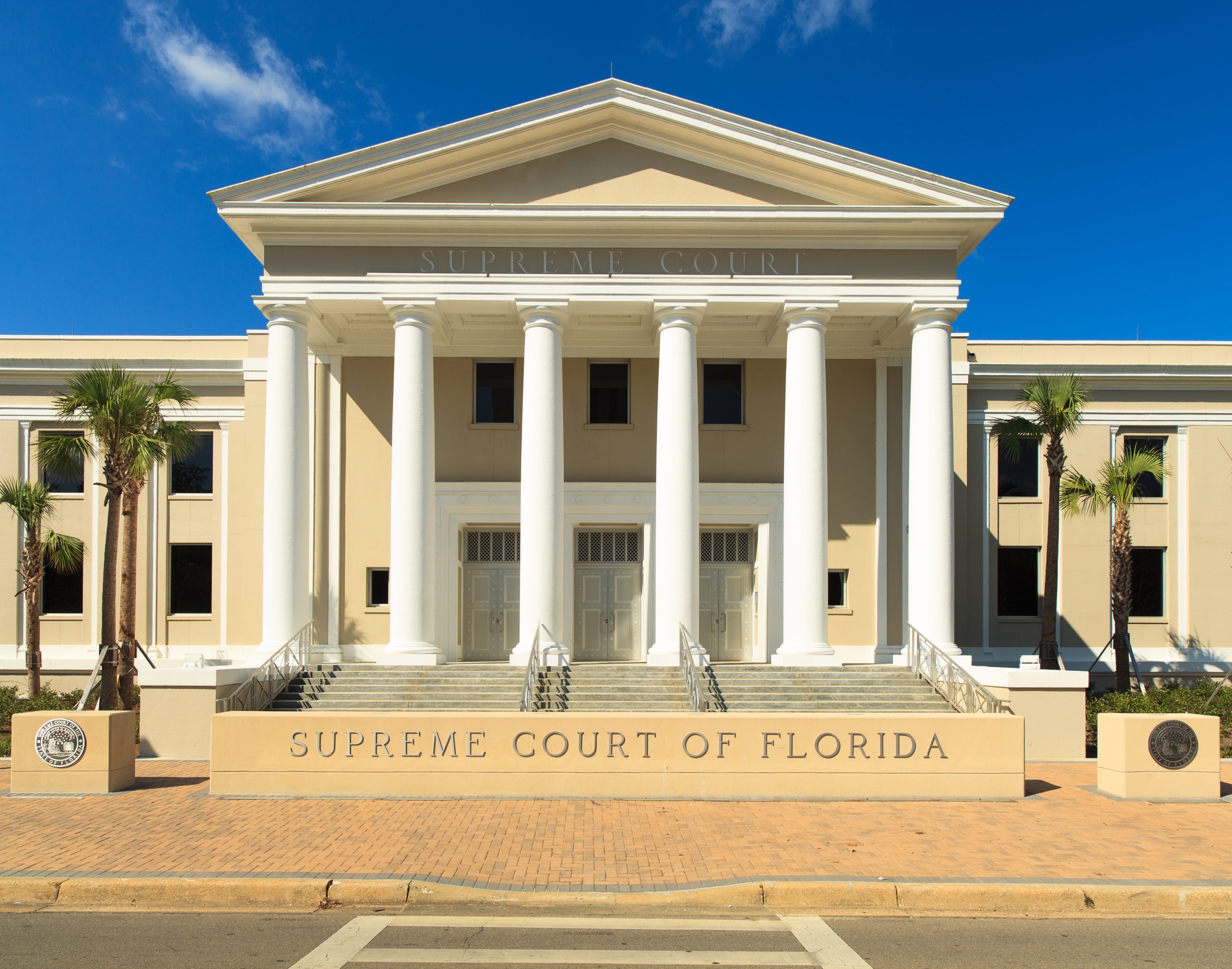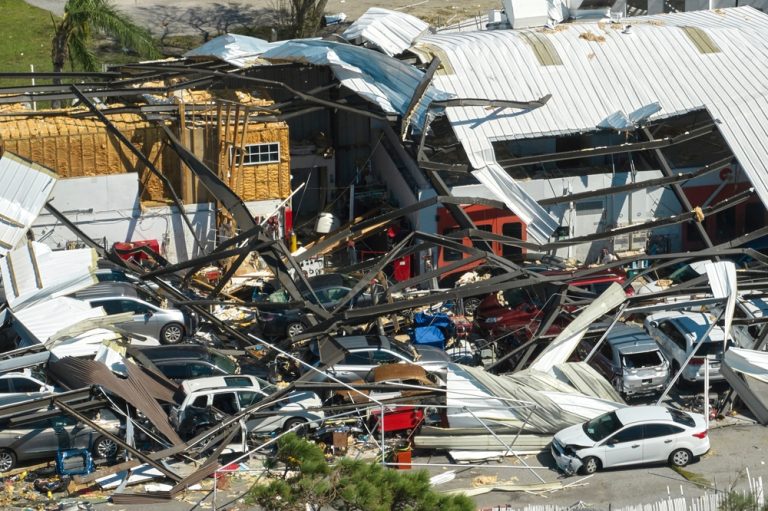Florida Supreme Court Limits Amount of Recovery in Mass Events
Florida Supreme Court Limits Amount of Recovery in Mass Events
In Barnett v. State Department of Financial Services, No. SC19-87, ––– So.3d ––––, 2020 WL 5667286 (Fla. Sept. 24, 2020), the Florida Supreme Court ruled that when multiple claims of injury are brought against the State (or its agencies or subdivisions) by multiple parties arising from one overall injury-causing event, liability is capped at $300,000 for all resulting injuries or deaths, as opposed to $300,000 in liability for each individual victim being injured or killed being treated as a separate incident or occurrence. The Court’s ruling almost surely applies to torts, and will affect public entities throughout the state, including school boards and public colleges and universities.
In January of 2010, the Florida Department of Children and Families’ abuse hotline received a phone call about an incident involving a man charging at, and threatening to kill, his estranged wife, and subsequently slashing her car’s tires. The man was subsequently arrested for aggravated assault with a deadly weapon and criminal mischief. Barnett, 2020 WL 5667286, at *1. DCF conducted an investigation, but ultimately closed the file concluding that the children were not at significant risk of harm. In September of 2010, however, that same man entered the woman’s residence and fatally shot the woman and her four children, and severely wounded a fifth child. Barnett, 2020 WL 5667286, at *1.
Subsequently, representatives of the five children filed suit against DCF alleging claims of wrongful death and negligence. Barnett, 2020 WL 5667286, at *2. DCF asserted various affirmative defenses, including that Florida’s limited waiver of sovereign immunity limited the aggregate recovery available to the Plaintiffs to $200,000.1 The trial court ruled that the shooting of each child was a separate incident or occurrence and, therefore, each child could recover up to $200,000. Barnett, 2020 WL 5667286, at *2. The Fourth DCA reversed and held that the case “involve[d] a single claim of negligence against [DCF] in the failure to properly investigate the family and the stepfather before closing its file. Thus, each estate’s claim and the claim of the injured child [arose] from the same incident of negligence of [DCF]. Therefore, the $200,000 cap per incident or occurrence applie[d] to limit recovery for all claims.” Barnett, 2020 WL 5667286, at *2. The Plaintiffs then appealed the case to the Florida Supreme Court.
The Florida Supreme Court carefully examined the language of Florida Statutes, Section 768.28(5), which states in part:
The state and its agencies and subdivisions shall be liable for tort claims in the same manner and to the same extent as a private individual under like circumstances, but liability shall not include punitive damages or interest for the period before judgment. Neither the state nor its agencies or subdivisions shall be liable to pay a claim or a judgment by any one person which exceeds the sum of $100,000 or any claim or judgment, or portions thereof, which, when totaled with all other claims or judgments paid by the state or its agencies or subdivisions arising out of the same incident or occurrence, exceeds the sum of $200,000. However, a judgment or judgments may be claimed and rendered in excess of these amounts and may be settled and paid pursuant to this act up to $100,000 or $200,000, as the case may be; and that portion of the judgment that exceeds these amounts may be reported to the Legislature, but may be paid in part or in whole only by further act of the Legislature.
Id. at 4.
Noting that “waivers of sovereign immunity must be construed narrowly in favor of the government,” the Court examined the meaning of the phrase “arising out of the same incident or occurrence.” Barnett, 2020 WL 5667286, at *4. DCF contended that this phrase referred to the negligent or wrongful acts or omissions of its employees, and therefore the sovereign immunity cap applied to the gross amount of the children’s claims. The Plaintiffs, on the other hand, argued that the phrase referred to the actual shootings.
The Supreme Court ultimately agreed with the Plaintiffs for three reasons. First, the Court held that “to equate ‘negligent or wrongful act or omission’ with ‘incident or occurrence’ would negate the Legislature’s decision to use different phrases in different parts of section 768.28.” Barnett, 2020 WL 5667286, at *5. Second, “the definitions cited by [the children’s estates] show that the words ‘incident’ and ‘occurrence’ more naturally and reasonably include the point at which damages are inflicted, not just the (potentially remote) point at which the state defen-dant’s negligent or wrongful act occurs.” Id. Third, “the relevant statutory phrase is ‘claim or judgment…arising out of the same incident or occurrence’ and the text’s use of the words ‘arising out of’ also are best understood to include the immediate injury-causing event, not just the negligent omissions that allegedly gave rise to that event.” Barnett, 2020 WL 5667286, at *6.
The Court’s agreement with the Plaintiffs on this issue, however, did not end the Court’s analysis. Instead, the Court next examined whether the phrase “same incident or occurrence” referred to the whole event, or whether the shooting of each victim constituted a separate incident or occurrence. Disagreeing with the Plaintiffs on this issue, the Court held that the plain and ordinary meaning of the phrase “same incident or occurrence” referred to the entire criminal event, not the smaller incidents contained therein. Barnett, 2020 WL 5667286, at *7. The Court noted that it would reach the same conclusion even if the phrase was ambiguous because waivers of sovereign immunity must be narrowly construed in favor of the government. Id.
So what does this mean in mass shooting cases? The shooting of each victim does not constitute a separate incident or occurrence. Thus, if 10 students die or are injured in a mass shooting while attending school, and each brings a negligence claim, then the applicable agency liability is capped at $300,000, as opposed to a potential $3,000,000 in exposure. Section 768.28, Florida Statutes, and its cap, only applies against public, not private entities.
The aggregate cap applied in Barnett v. State of Florida would presumably apply in all other suits against State agencies or subdivisions where multiple people were injured or killed in a single event, resulting from a mass shooting or otherwise.2 In other words, where the plaintiff’s tort theory is that the State is derivatively liable for a third party’s tortious or criminal conduct, the statutory cap is linked to the third party’s negligent or wrongful conduct — the point at which the damages are inflicted – not the State’s negligent or wrongful conduct. Thus, multiple claims involving a tortious or criminal episode with multiple victims would very likely be capped at $300,000.
Endnotes:
1 In 2010, the Legislature raised the individual cap to $200,000 and the aggregate cap to $300,000.
2 See, e.g., Guttenberg v. Sch. Bd. of Broward County, SC19-487, 2020 WL 5667483, at *1 (Fla. Sept. 24, 2020).
This article was originally published in the Florida Bar Education Law Journal, Volume 2, Issue 3, Fall 2020 and is reprinted here with permission from The Florida Bar.









